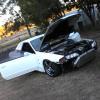Turbo Heat Shield
Announcements
-
Similar Content
-
Latest Posts
-
Yeah, the plan is to just put some black rubber vacuum line caps over them to "hide" them a bit I don't want to trim them in cause I need to put the OEM box back on at some stage
-
Plug and play. Need a tune. It's a PowerFC, same as any other PFC, just not needing an AFM.
-
Genuine GTR seat? There are none you would actually want for <$3k a pair.
-
By mtopxsecret6 · Posted
Hi everyone, just looking to see what's available in the GTR seat options, testing the waters on what's available. Wanting a driver's seat to replace my old school OG jap race seat, going to re-register the car so need a factory seat. Prices currently seem to go from $300 to $2k for a driver's seat. What's options are there, that's good condition and actually a realistic price? Located Brisbane. Thanks
-






Recommended Posts
Create an account or sign in to comment
You need to be a member in order to leave a comment
Create an account
Sign up for a new account in our community. It's easy!
Register a new accountSign in
Already have an account? Sign in here.
Sign In Now